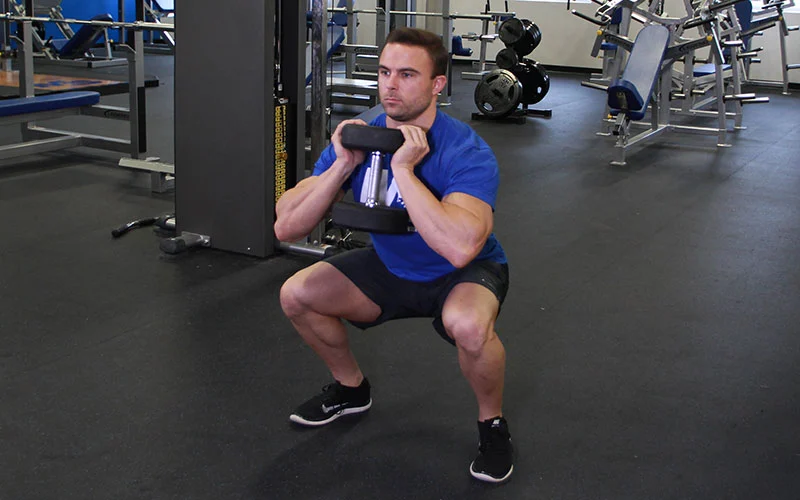Many people perceive hiking as a mental escape. However, fitness freaks know very well that it is a labor-intensive exercise that involves both cardiovascular endurance and muscular strength. Individuals cannot enjoy any scenic view if they often focus on sucking wind for soaking in the landscape. In this situation, you should incorporate physical workouts regularly to perform hiking activities into your regular fitness schedule. Here, we will discuss a few of the exercises for hiking mountains, which one can also do at home or nearby ground along with fitness centers.
Table of Contents
1. Step-ups
Step-ups will target your glutes and quads, which are necessary muscles to climb mountains. You may do step-ups at your fitness center by using a box. However, if you do not have a gym membership, you may even do step-ups at home. Use bleachers or staircases to perform one of the effective exercises for hiking to strengthen your quads.
How to Perform Steps-ups

- Stand by facing your bleacher or box (Start by using a lower box and aim for only 10 inches)
- Raise one of your feet to the box top and use the muscles to step up over the box
- Extend your hips as much as you can at the box top to stand upright completely with your legs.
- Use the same leg for stepping down.
- Switch on to your other leg to perform the next repetition.
2. Goblet Squats
Goblet squats are also one of the great exercises for hiking. These workouts target the hamstrings, quads, and glutes. Hikers use these muscles predominantly while they go for mountain trails. You should perform the goblet squat exercise in your toolkit. The best thing is that it is an easy-to-perform exercise.
How to Perform Goblet Squats

- Grab a dumbbell or kettlebell between the hands and hold it across your sternum.
- Put your feet approximately hip-width apart and place your body weight in your heels.
- Descend slowly until your thighs become parallel to the exercise floor. It will make sure that your knees will track on your toes instead of bowing inwards.
- Once you hit your thighs parallel, power from your heels to stand straight until you extend your hips completely to perform a single rep.
Note-Make sure to choose the dumbbell or kettlebell of appropriate weight, as a heavy dumbbell will make your exercise hard. In this way, you may build up the used weight for tough physical exercise.
3. Hanging Knee Raises
Hanging knee raises exercise aims to strengthen the core muscles of a fitness freak. A strong core is essential for doing several activities while hiking or trailing mountains.
How to Perform Hanging Knee Raises

Get a pull-up bar and hang from it by extending your arms completely. Starting from dead hands, engage the ab muscles and pull the knees upward close to your chest. Your position should be like the one sitting on a bench or chair. After that, you should maintain control while lowering your knees back down to hanging in a pull-up bar position to complete one repetition.
4. Downhill Lunges
Downhill lunges are excellent exercises for hiking activities. However, many athletes and fitness freaks underestimate the downhill shreds of their quads. Hikers often dread their climbs without failure. They think climbing is the toughest part of their entire day, while the dread climbs may lead to sore thigh muscles. However, downhill lunges are essential to prepare the quads for every steep descent. Moreover, they help to strengthen the core muscles and stabilizer an athlete.
How to Perform Downhill Lunges
- Look for an easy navigable gradual downhill.
- Place your upper body straight by placing your shoulders back and keeping your chin relaxed.
- Engage the core muscles and step ahead with a single leg.
- Place your hips low until the front knee bends perpendicularly.
- Put your entire body weight in the heels as you stand back up.
- Move forward with the back leg to finish the rep with your both feet together.
- Repeat the same movement by starting with another leg.
- Work for a maximum of 50 yards of downhill lunges gradually.
Note- Your knees stay directly above the ankles instead of pitching forward on your toes.
5. Stairmaster
Many adventure lovers and athletes perceive that muscle strength is essential for hiking activities. However, cardio is also one of the compulsory exercises for hiking and mountain trails. Here comes the role of the Stairmaster exercise, which works on the endurance of your cardiovascular activities. Simultaneously, this exercise will increase your climbing muscle strength.
How to Perform Stairmaster

- Search for a machine at your nearby fitness center or gym.
- Set a timer for about 20 minutes whenever you visit the gym for the first time.
- You may increase your time allotment during your subsequent visits. However, we recommend you initially get the feeling for the machine.
- Plan to use the machine for five minutes as a warm-up session by following a slow pace.
- Look for a stepping pace to maintain it for the remaining 15 minutes duration.
- When you hike, you do not need to bother about sprinting. Hence, you do not have to bother about it while working on the machine.
- Focus on increasing your duration and workout intensity gradually.
Note-If you do not have a gym in your area, you may look for a hill in the neighborhood and work on only hill repetitions. Accordingly, you should hike the nearby hill and jog back to its bottom. Depending on the hill’s length, start with a minimum of 3 or 5 climbs in a single workout before increasing your number with time.
6. Kettlebell Deadlift
A kettlebell deadlift is also a mandatory exercise to include in your hiking exercise routine. Deadlifts primarily target your hamstrings, which are significant muscles for mountain hikers.
How to Perform Kettlebell Deadlift

- Start with a lightweight kettlebell to obtain the right form.
- Gradually increase the kettlebell weight to become competent enough to handle heavy deadlift loads.
- Stand by keeping your feet at an about hip-width distance and point your toes forward.
- Hold your kettlebell in both hands to let them rest between the thighs while you stand upright.
- Maintain your hinge and neutral spine at your hips by sticking your butts out slightly, as you close your car door by using it.
- Lower into a squat gently until your kettlebell reaches the ground between the feet.
- Straighten the knees to return before hinging the hips back to your initial position to count a single rep.
7. Stretching
Once you become aware of several exercises for hiking in the arsenal, you must consider the most essential aspect of stretching. It is imperative to prevent any physical injury and achieve quick recovery of your body. Fitness trainers recommend everyone perform dynamic stretching for about 5 minutes to 10 minutes before they start their strength training. A few dynamic stretches are jumping jacks, easy warmup jogs, butt kicks, and high knees.
Each of these will increase your heart beat rate while you warm up your body to prepare for strength exercises. Other than that, you should perform a few static stretches by stretching your limbs after your regular workout. Static stretches after a workout are equally essential to help your warm and limber body.
Conclusion
Overall, exercises for hiking consist of a combination of muscle strength, cardiovascular, core muscles, and stretching exercises. Each of these exercises will tone your muscles and boost their strength to use while you hike on a mountain trail. Therefore, regular hiking exercises will give you enough speed, endurance, and agility to let you enjoy the natural beauty to its full fledge.







